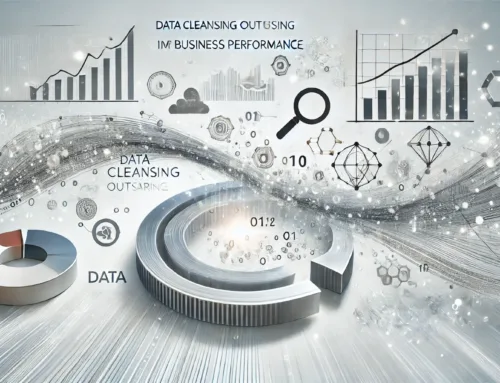The process of data cleansing in outsourcing is a meticulous journey that navigates through the complexities of data accuracy and reliability. From the initial data collection to the final validation, each step plays a crucial role in ensuring the integrity of the information you rely on. With tools and techniques at your disposal, the path to pristine data is paved with precision and expertise. But what lies beyond the surface-level cleaning, and how does this process impact the larger scope of your outsourcing endeavors?
Data Auditing
Have you ever wondered how important data auditing is in the process of data cleansing? Data auditing plays a crucial role in ensuring the accuracy and quality of data. By conducting a thorough data integrity check and data consistency evaluation, organizations can identify and rectify discrepancies, inconsistencies, and errors within their datasets. Through this meticulous process, data accuracy assessment is enhanced, leading to significant data quality improvement.
Data auditing involves scrutinizing the integrity of data to ensure its consistency and reliability. It helps in identifying any anomalies or irregularities present in the dataset, which may impact the overall quality of the information. By meticulously evaluating the data for inconsistencies, duplications, or inaccuracies, organizations can maintain clean and reliable data sets, essential for making informed business decisions.
Error Identification
Error identification is a critical step in the data cleansing process, as it involves pinpointing and rectifying inaccuracies, inconsistencies, and discrepancies within datasets. Ensuring data quality is essential for error prevention and maintaining the integrity of business operations. When errors go undetected, they can lead to faulty analysis, misguided decisions, and financial losses. To identify errors effectively, it is crucial to implement thorough validation processes, conduct regular audits, and utilize automated tools to flag anomalies. By meticulously examining data for outliers, duplicates, missing values, and formatting issues, you can enhance the overall accuracy and reliability of your datasets. Error identification also involves tracing the root causes of discrepancies, which may stem from human error, system glitches, or outdated information sources. By addressing these underlying issues, you can proactively prevent errors from recurring and streamline your data cleansing efforts. Remember, error identification is the cornerstone of data quality assurance and error prevention in the data cleansing process.
Data Cleaning
Data cleaning is a fundamental stage in the data cleansing process that focuses on identifying and rectifying errors, inconsistencies, and inaccuracies within datasets. This process involves various techniques such as data enrichment, where missing or incomplete data is filled in using external sources. Data normalization is another crucial aspect of data cleaning, ensuring that data is organized consistently for easier analysis.
Data matching is a key component of data cleaning, where duplicate records are identified and merged to maintain data integrity. By comparing and linking similar records, data matching helps prevent redundancy and ensures a single source of truth within the dataset. Additionally, data profiling plays a significant role in data cleaning by analyzing the quality and structure of the data. This step helps in understanding the overall health of the dataset and guides further cleaning actions.
Data Validation
Ensuring the accuracy and consistency of your datasets is a critical aspect of maintaining data integrity. Data validation plays a key role in this process by verifying the quality and reliability of your data. Through techniques like data profiling, you can analyze your datasets to identify inconsistencies, errors, and missing values. This step is essential for enhancing data accuracy and ensuring that your decisions are based on reliable information.
Moreover, data validation also involves data enrichment, where additional information is added to your datasets to improve their quality and completeness. By enriching your data, you can enhance its value and reliability for business operations and decision-making processes. This meticulous validation process contributes significantly to maintaining data integrity, which is crucial for the overall success of your data-driven initiatives.
Data Standardization
Data Standardization plays a crucial role in ensuring consistency and uniformity across your datasets, making it easier to analyze and extract meaningful insights. Utilizing tools for standardization can streamline the process by automatically formatting data according to predefined rules, reducing errors and improving efficiency. By focusing on standardization, you can enhance the quality of your data, leading to more accurate decision-making and overall business success.
Standardization Importance
Implementing standardized processes is crucial in the realm of data cleansing outsourcing. Data standardization plays a vital role in ensuring data quality and minimizing errors, ultimately impacting business operations positively. By establishing standardized formats, structures, and definitions for data across different systems and sources, organizations can enhance the accuracy, consistency, and reliability of their data.
Consistent data standards facilitate effective data integration, analysis, and decision-making processes. When data is standardized, it becomes easier to identify and rectify discrepancies, duplicates, and inconsistencies, leading to improved data quality. This, in turn, enhances the overall efficiency and effectiveness of business processes, as decision-makers can rely on clean, standardized data for critical insights and strategic planning.
Moreover, standardized data simplifies data migration, sharing, and reporting processes, reducing the likelihood of errors and ensuring that accurate information is available for various stakeholders. Ultimately, the adherence to data standardization practices can significantly impact a company’s ability to make informed decisions, enhance customer experiences, and drive overall business success.
Tools for Standardization
Utilizing specialized tools for data standardization is crucial in streamlining the process of aligning disparate data sets into a cohesive and uniform format. These tools play a pivotal role in enhancing data enrichment by automating the standardization process. By incorporating automation, organizations can significantly reduce the time and effort required for manual data standardization tasks.
Quality assurance is another vital aspect facilitated by these tools. They enable organizations to maintain high levels of data accuracy by detecting and rectifying inconsistencies, errors, and duplications within the datasets. Through automated standardization tools, businesses can ensure that the data being processed meets predefined quality benchmarks, enhancing overall data integrity and reliability.
Process automation within these tools further aids in standardization by eliminating human error and ensuring consistency in data formatting. By automating repetitive tasks such as data cleansing, normalization, and deduplication, organizations can achieve greater efficiency and effectiveness in managing their datasets. In essence, the integration of specialized tools for data standardization is essential for optimizing data quality and operational effectiveness within the outsourcing process.
Removal of Duplicates
To ensure the integrity and accuracy of your datasets, one crucial step in the data cleansing process is the identification and removal of duplicate entries. Duplicate data can lead to inconsistencies, errors, and skewed analytics, impacting the overall quality and reliability of your information. The process of removing duplicates involves systematically comparing records within a dataset and eliminating any redundant entries.
Start by utilizing automated tools or algorithms to scan your datasets for identical or similar entries. These tools can quickly identify duplicates based on predefined matching criteria such as names, addresses, or unique identifiers. Once duplicates are flagged, you can decide on a strategy for handling them, whether it’s merging duplicate records, selecting the most recent entry, or deleting redundant information altogether.
Frequently Asked Questions
Can Outsourcing Data Cleansing Compromise Data Security?
Outsourcing data cleansing can pose risks to data security if not managed carefully. Ensure thorough vetting of service providers to safeguard data accuracy and confidentiality. Prioritize secure protocols and regular audits for protection.
How Does Outsourcing Data Cleansing Impact Data Privacy Regulations?
When considering outsourcing data cleansing, you may worry about data privacy implications. However, by carefully vetting providers to ensure regulatory compliance, you can mitigate risks. Outsourcing can enhance data privacy efforts with proper oversight.
What Measures Ensure Data Accuracy During the Cleansing Process?
To ensure data accuracy during cleansing, you need robust data validation for error detection. Utilize advanced cleaning techniques like deduplication and normalization. Implement stringent quality assurance checks at each stage. These measures guarantee reliable, clean data outputs.
Are There Risks Associated With Outsourcing Data Cleansing?
Outsourcing data cleansing can be a bit like playing a game of data integrity roulette. While it offers efficiency, cost-saving, and expertise, remember to prioritize rigorous data validation to mitigate risks like data breaches and accuracy issues.
How Can Outsourcing Data Cleansing Improve Data Quality Control?
Outsourcing data cleansing can enhance data accuracy and quality control by leveraging specialized expertise, tools, and resources. It streamlines processes, identifies inconsistencies, and ensures data integrity, leading to improved decision-making and operational efficiency.




